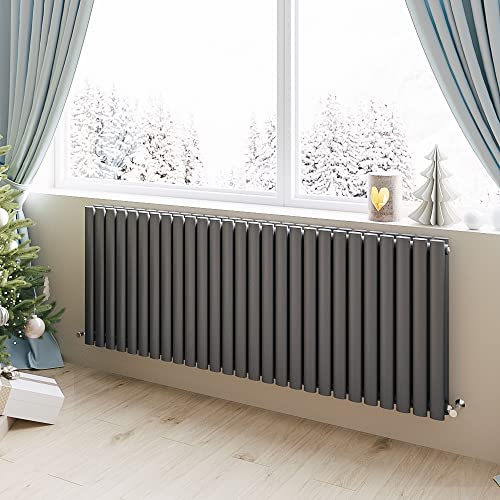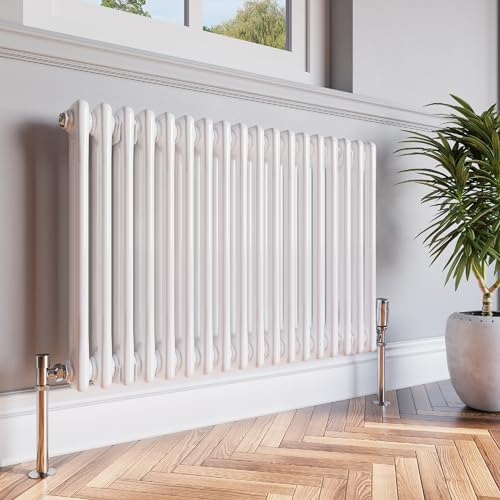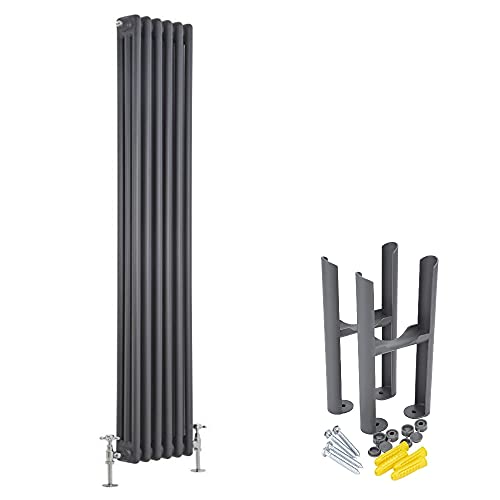10 hallway radiator ideas for a warm welcome to your entrance
This busy thoroughfare can be the draughtiest space in the house. Bring the heat with our choice of radiators that are as practical as they are stylish
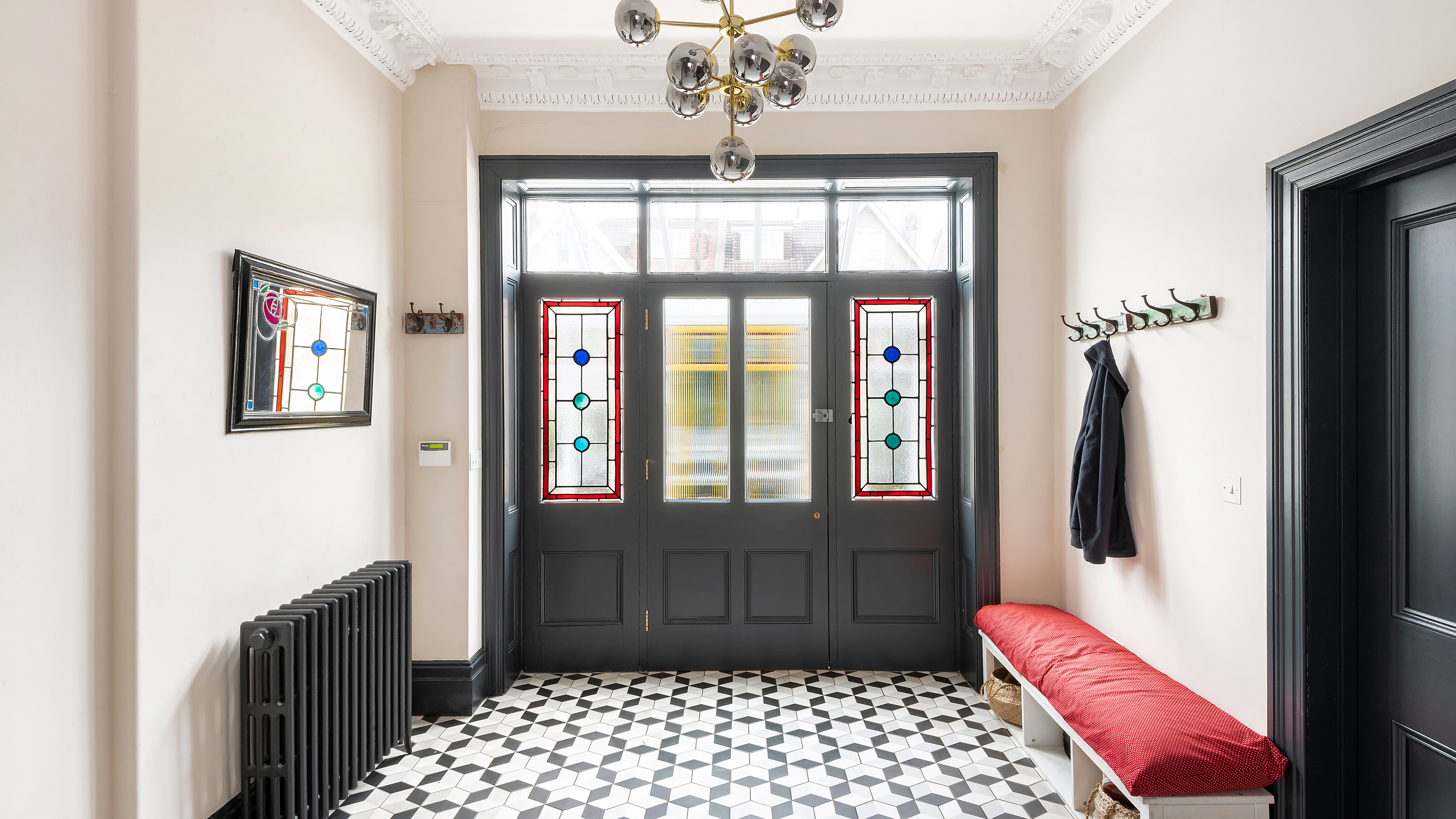
Hallway radiators can be the hardest working heat source in the home. Multiple doorways are constantly being opened and closed, external entrances and exits are letting in draughts of cold air and the stairwell allows precious heat to rise and escape to the first floor.
They are also on show from the start with no large pieces of furniture to hide them, which is an important factor when deciding which type of radiator to install. Make the most of it by turning this wall hugger into the centre of attention.
"No rule says a functional element in your home can’t be a focal point too," says Matthew Jenkins, heating expert for MyJobQuote.co.uk. "Choosing a stunning radiator which heats your hallway while also providing a talking point for visitors and guests is a win-win situation, allowing you to display your unique taste from the moment people come through your front door."
If you are ready to upgrade your heating system, our experts offer advice on the best style to choose.
1. Conceal a dull radiator with a stylish cover
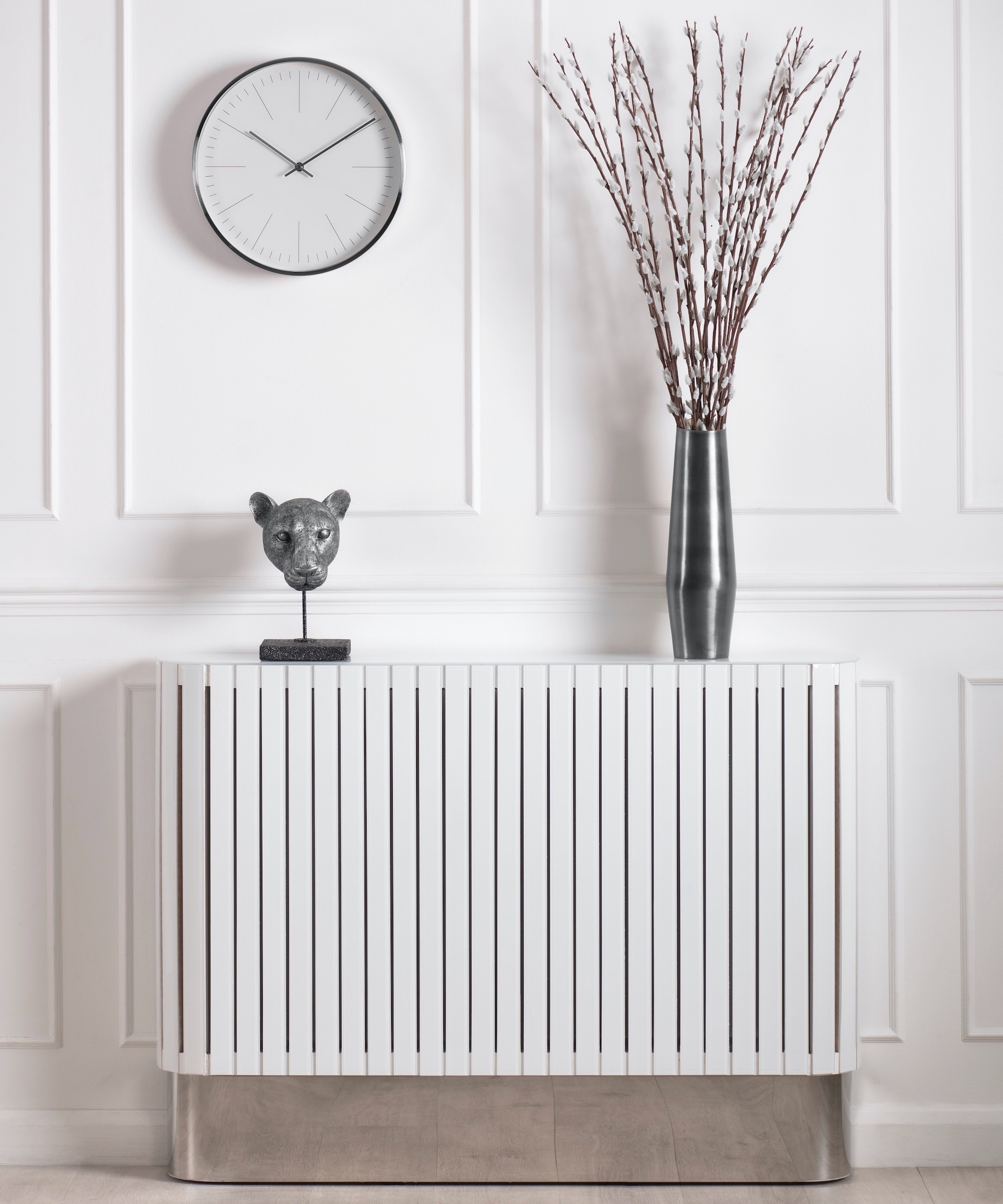
If you have a functional and efficient radiator that doesn’t quite match the decorative character of your home, concealing it with a radiator cover could be an elegant and cost-effective solution.
A cover with well-placed grilles or slats allows the warm air heated by the hot water passing through the radiator to flow out into the hallway. The cover can also serve as a console table, providing a useful shelf for the key dish or vases of dried grasses.
Wooden radiator covers are available for under £50, but you can also make your own using pre-cut mdf wall panels attached to a frame made from wooden battens. Alternatively, add some glamour with hand-cut bevelled glass panels above a metallic pedestal.
2. Go vertical in narrow hallways
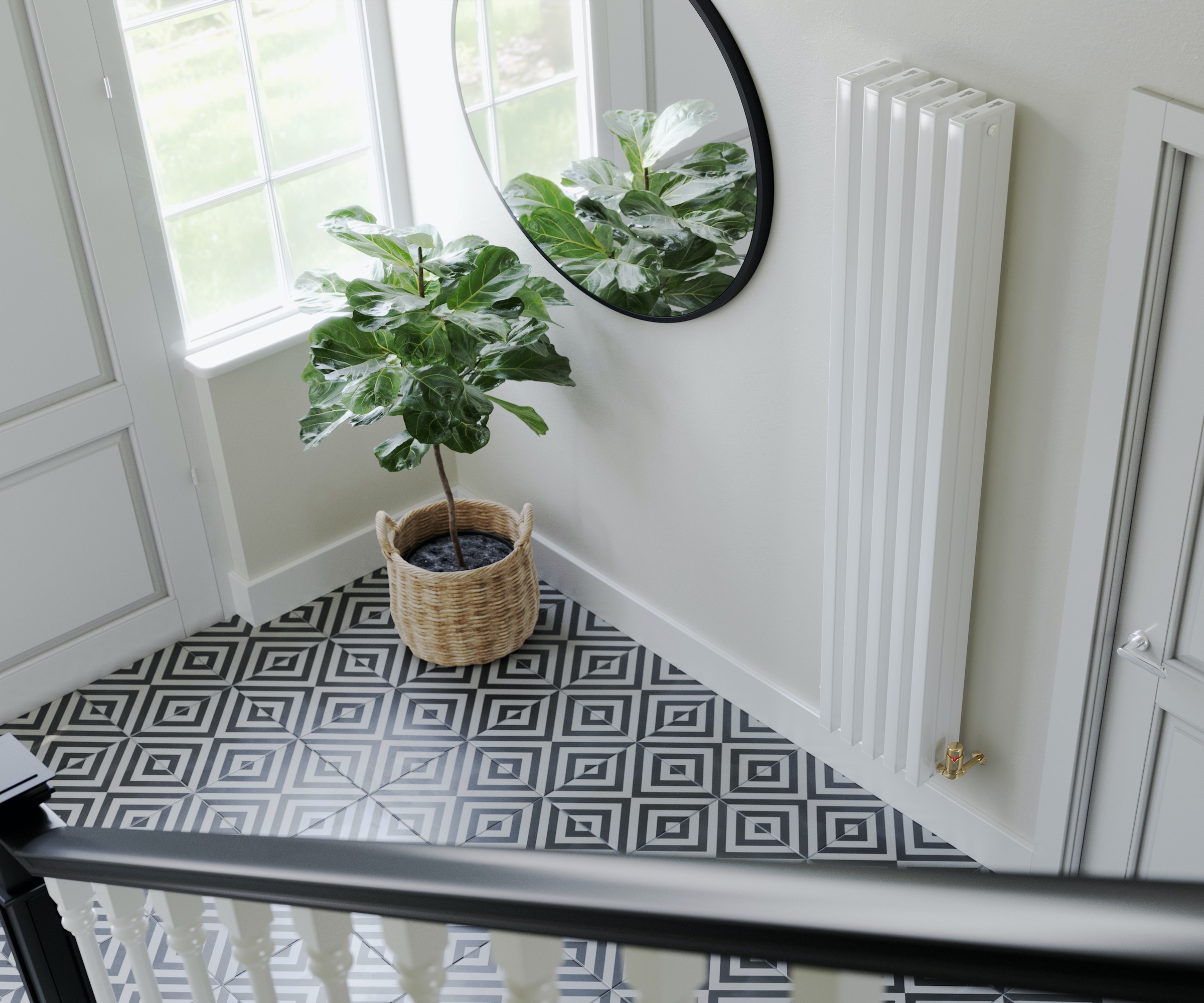
When wall space is at a premium in a hall, a vertical radiator could be a solution.
"In narrow or angled hallways, you need to choose a radiator that doesn’t obstruct movement," says Nicholas Auckland, managing director of Trade Radiators. "Slimline or vertical radiators are recommended when it comes to saving room, and they can fit well into tight areas without compromising the amount of warmth put out.
"For double-height areas, vertical radiators are functional and stylish, offering high heat output while using less horizontal space."

A heating and energy expert with over 10 years of experience in the industry, Nicholas is dedicated to finding the best heating solutions for every need, optimising energy usage, reducing costs and helping others lower energy bills.
3. Pick a modern classic with a column radiator
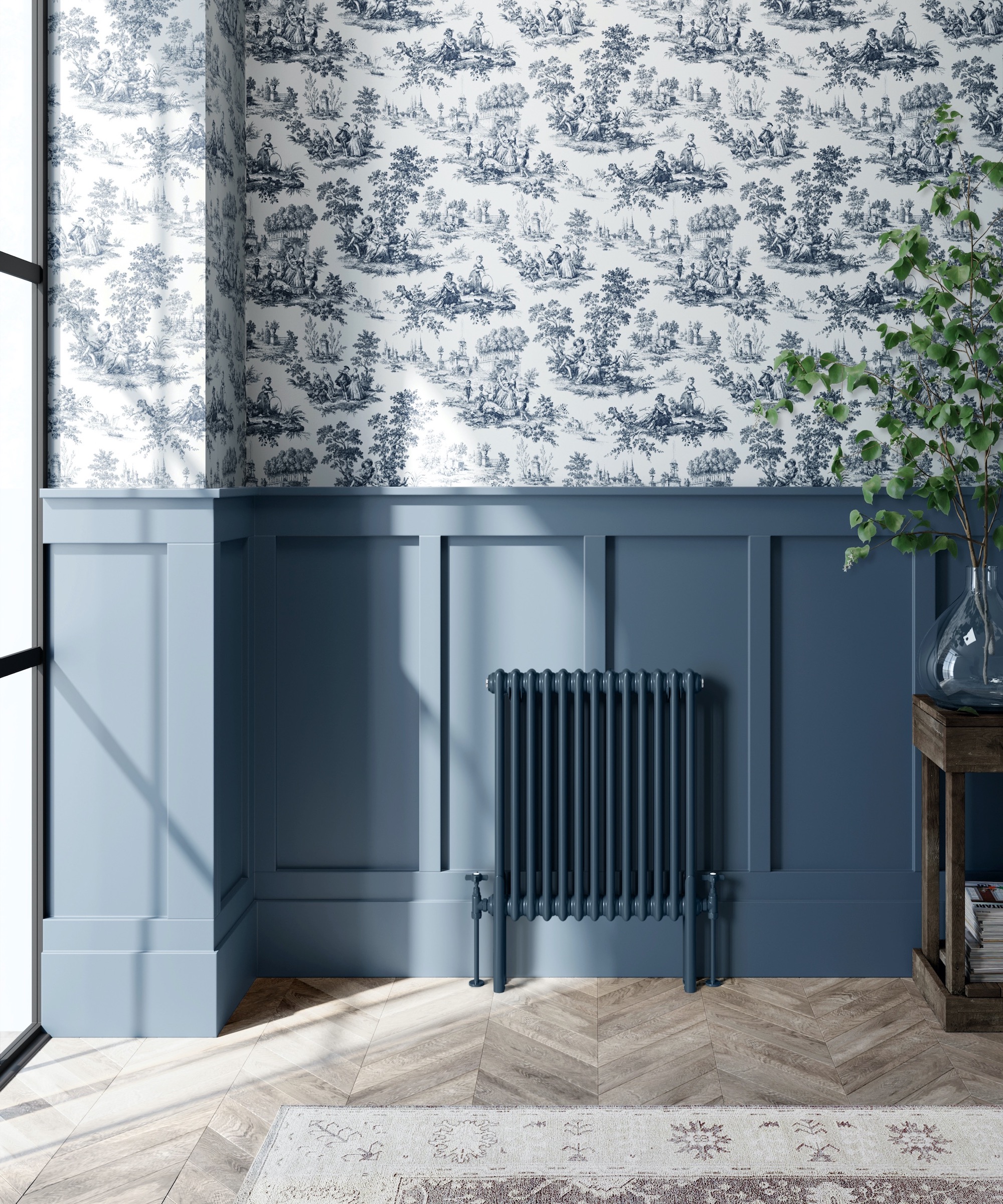
One of the most on-trend radiator styles is actually a classic design. Column radiators are inspired by those from Victorian and Edwardian times, and are the perfect modern compromise when updating a home from one of those eras.
Although new columns have the look of those early forms of central heating, they are often made out of aluminium rather than traditional cast iron. Aluminium is fast and efficient to heat up compared to the heavier metal, so it is easy to switch on (via app) as you head home.
Column radiators can range from two to six columns deep, start from a squat 300mm up to 1800mm tall and reach widths of more than 1600mm, so you can find a suitable shape to fit the sometimes unconventional dimensions of a hall.
4. Embrace the past with a restored radiator
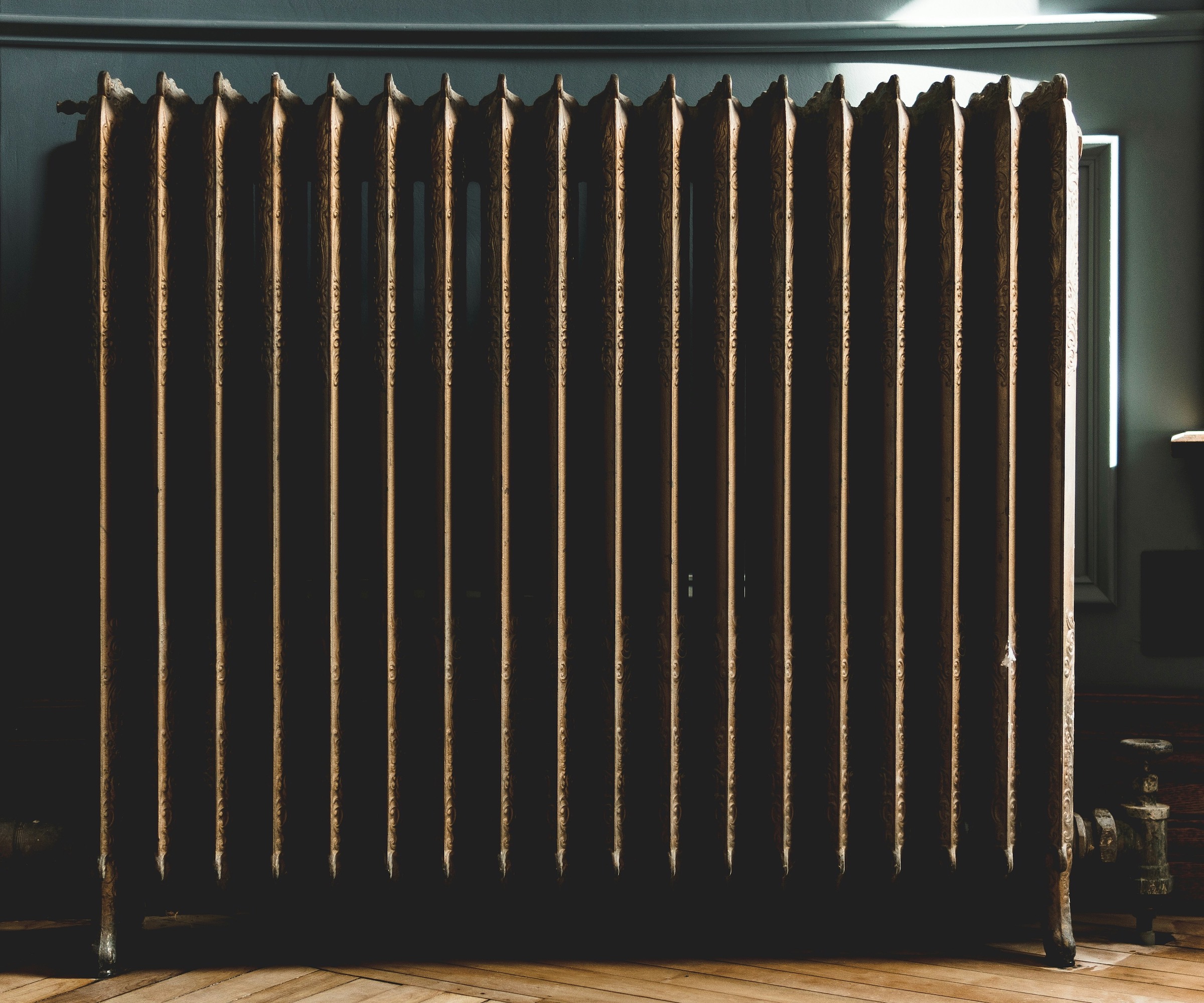
These are popular with the home renovator seeking an authentic look as they work on their period home. Original radiators fully restored are available from specialist reclamation firms, who ensure they are in full working order and adapted to fit modern pipework.
Apart from the satisfaction of sustainably reusing something that dates back to last century, the restored radiators bring a sense of history and character.
Some have ornate designs on them or are in a timeless style, such as Art Deco. They can be a real decorative highlight in a hallway where they are always on show and not tucked away out of sight behind a sofa or beneath curtains.
5. Take a seat on a low radiator
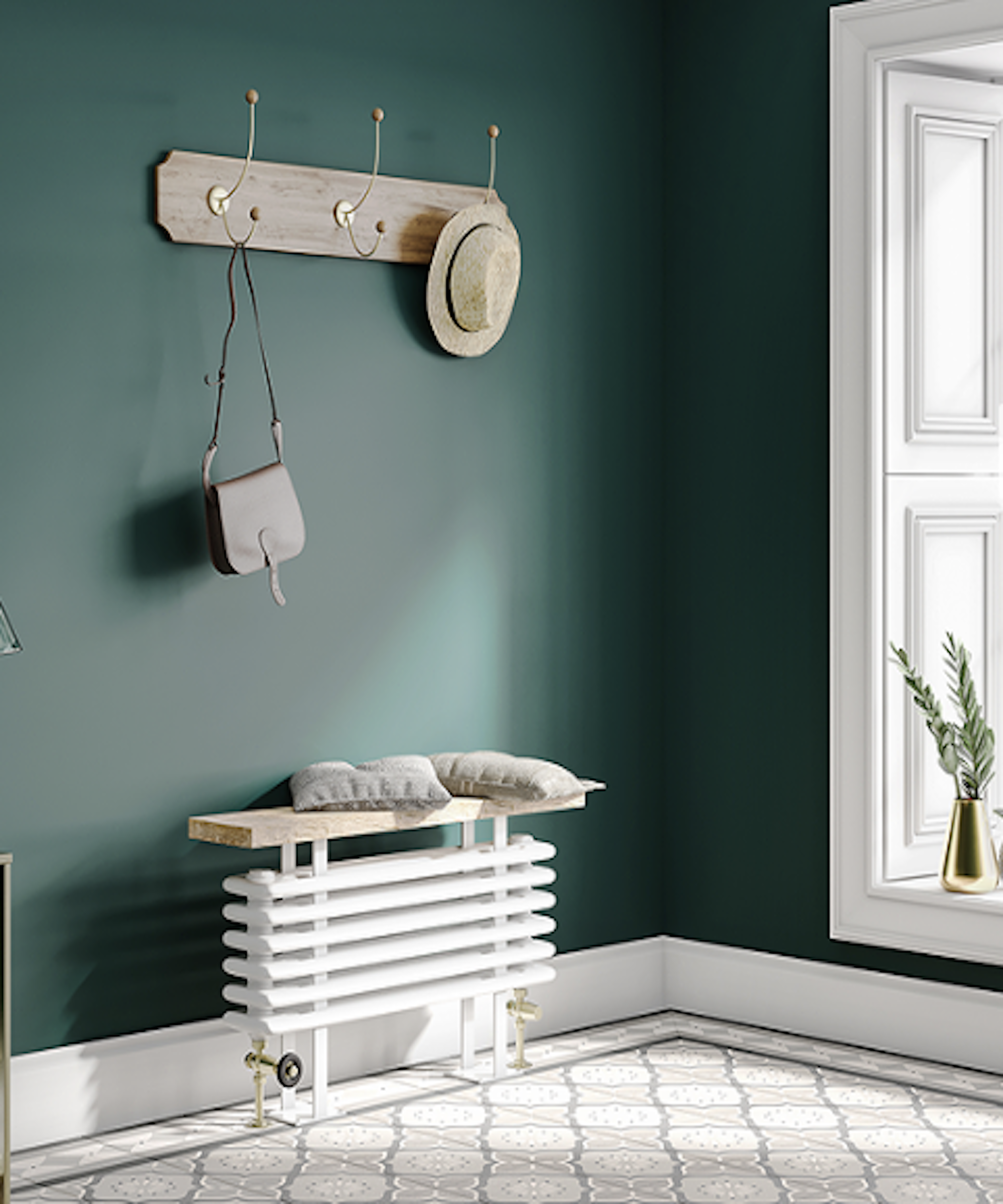
If large, low windows or glazed panels are a feature of your hallway, get creative with your radiator size to fit one underneath the sill. A height of 300mm is standard for low radiators, but there are some available that are even shorter.
Choose one that is multiple columns deep and it could be used as a bench seat, making it the perfect transition spot to sit and take off footwear as you are heading out or arriving home.
If you pick a cast iron radiator, be aware that they are denser than steel or aluminium so are slower to heat but retain it longer – which could keep this busy thoroughfare comfortably warm and create less of a cold draught when opening doors into living rooms.
6. Choose a slimline single panel radiator
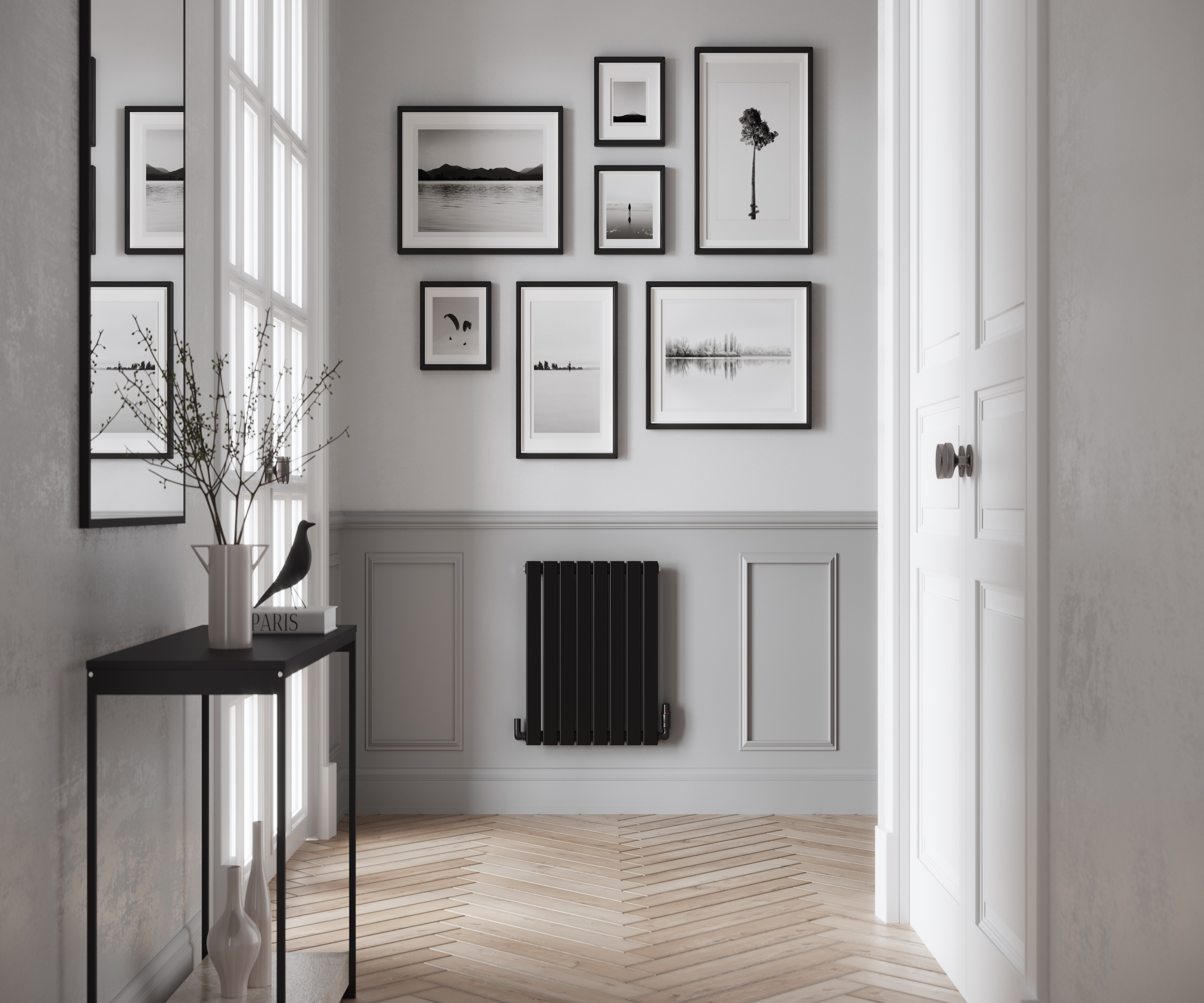
For a compact hallway, you may only have space for a slim radiator. "Many hallways will benefit from single-panel radiators which can heat a small area without taking up too much room," says Matthew Jenkins.
"They are typically referred to as type 11 radiators, with their double panel counterparts being known as type 22 radiators which can be used in larger hallways."
These slim radiators could also be used in angled hallways, where you might need two radiators to make sure there is heat for the length of the hall.

Matthew has worked in the domestic heating industry for over 15 years. A gas safe engineer specialising in heating and plumbing, he also passes on his expert knowledge working closely with MyJobQuote.co.uk
7. Blend a radiator to a hallway wall
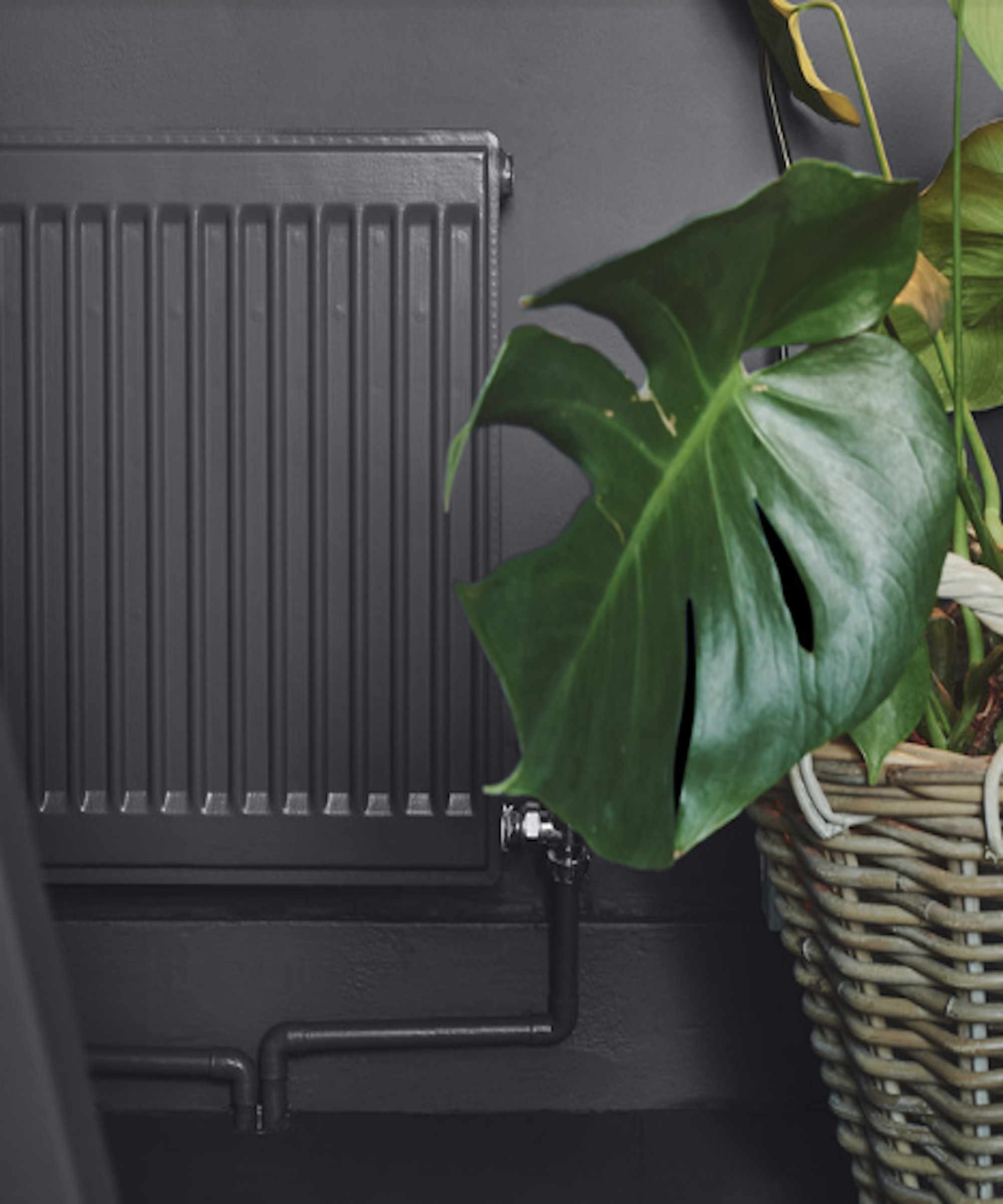
Revamp your radiator by painting it a bold colour that will add a pop of personality to your hall.
You can use a shade that coordinates or contrasts with the wallpaper behind it, or blend the radiator into the background by using a paint that matches the paint behind the radiator on either a wall or panelling. This creates a cohesive look, and makes the room seem more spacious by reducing the prominence of the heater.
Although paint adds another layer to the radiator which could affect its heat output, the difference is negligible.
When choosing the best radiator paint for painting a radiator, specialist radiator paints are available, but if you are trying to match with the wall paint, you can use eggshell, gloss or satin. Choosing a bright or dark colour will mitigate the yellowing effect that heat can have on white or off-white oil-based paints.
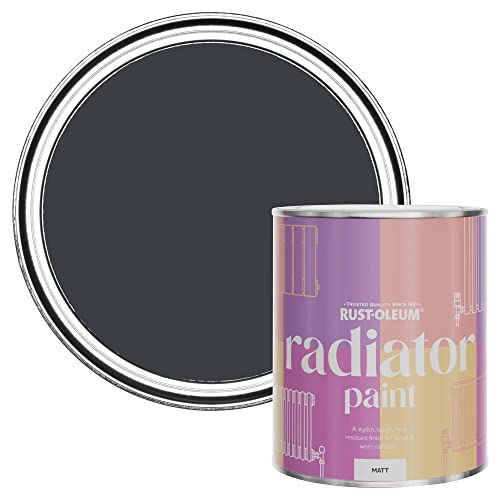
Easy to apply by brush or roller, give your horizontal, vertical and column radiators an instant refresh with long-lasting coverage that’s non yellowing and resistant to mould
8. Plug in a radiator to heat your hallway
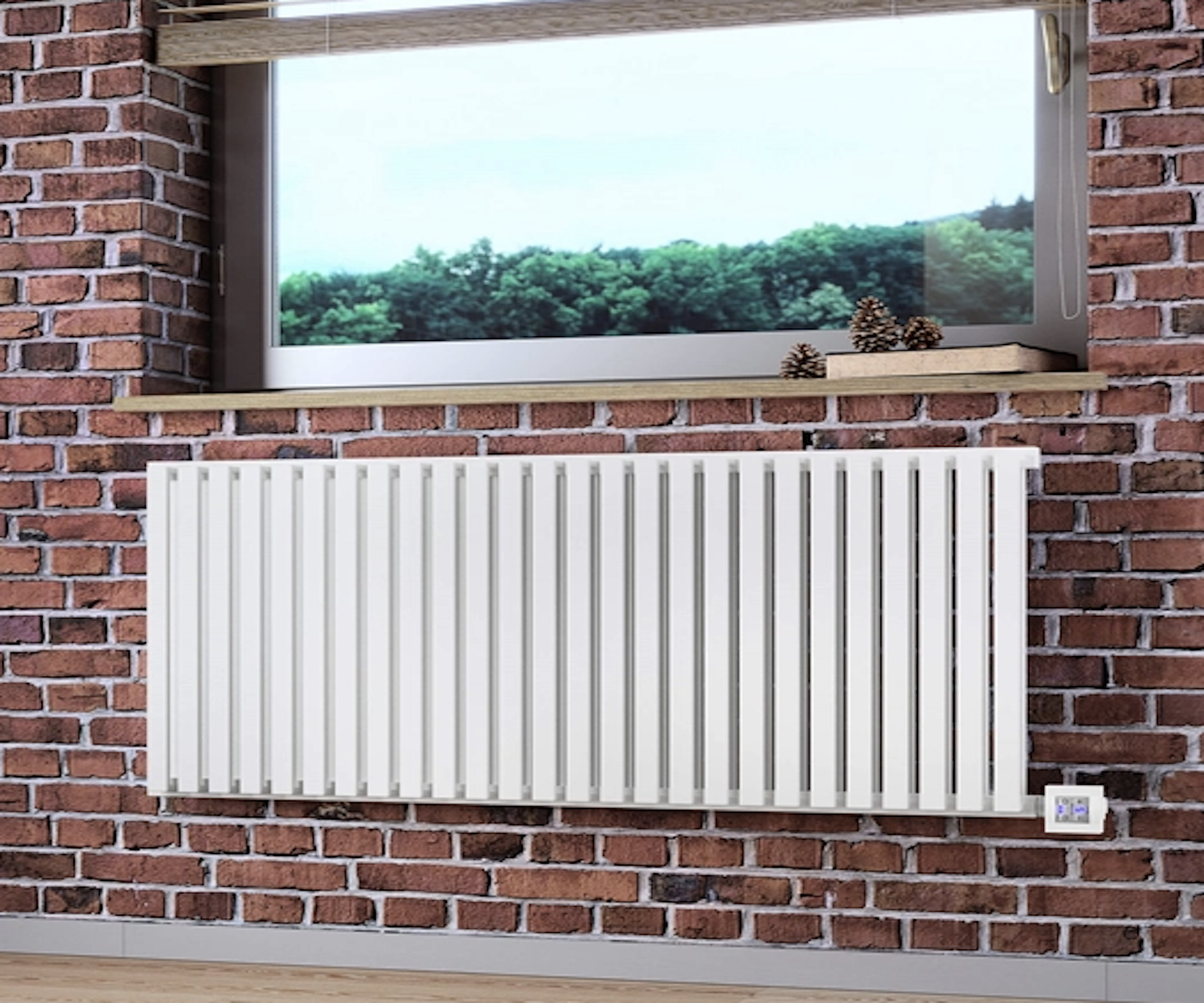
If you have invested in solar panels as a greener way to power your home, take advantage of the free energy it creates with electric radiators in the hall. They don’t need to be connected to a complex network of pipes that run below the flooring or along the walls, so are quick and easy to install.
They are also efficient, with all of the energy converted to heat, and they warm up more quickly than traditional central heating, so you could choose to only turn it on shortly before you arrive home.
9. Brighten a dark hallway with mirror radiators
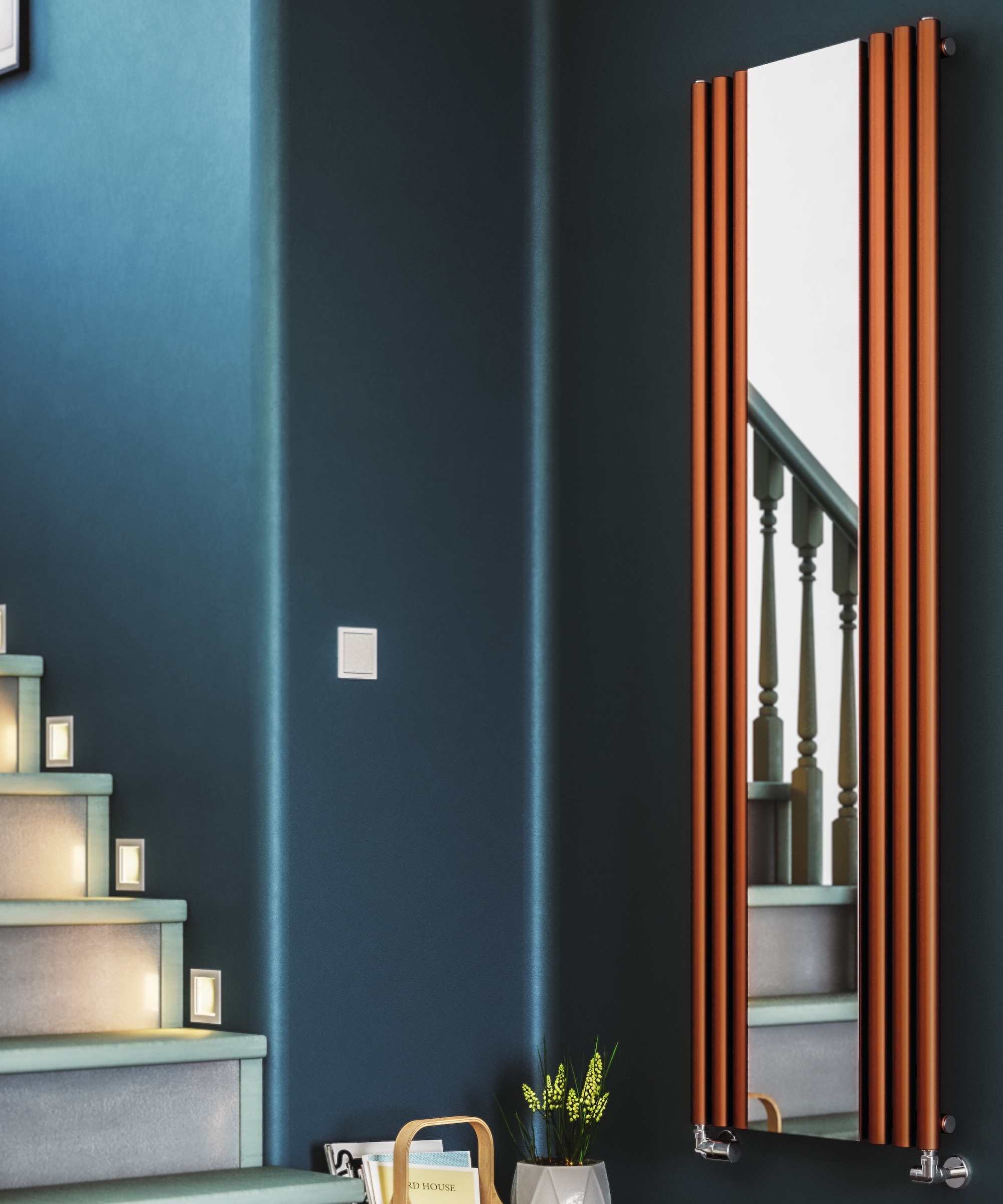
Overcome common hallway issues, such as a gloomy corners and a lack of space, by fitting a radiator with a reflective surface to bounce light around.
"A mirrored radiator is a great option is, and might not appear as a radiator at all," says Nick Duggan. "They serve a dual purpose and make the hallway feel lighter and brighter."
Handily placed by the front door, they also offer the chance for a quick outfit check before you leave.
10. Hang a 'masterpiece' that'll heat your home
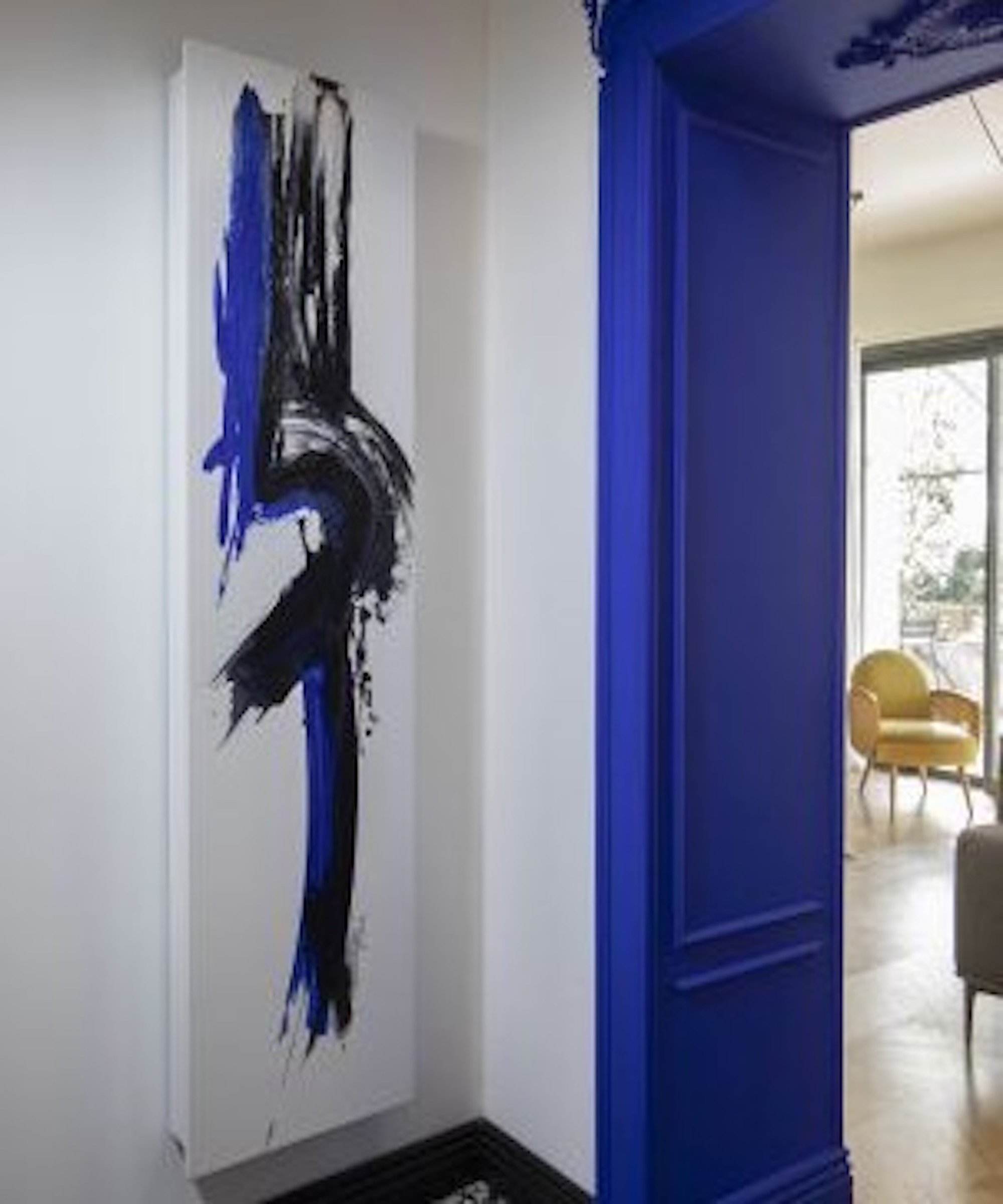
When is a radiator not a radiator? When it’s a work of art. Give your hallway a gallery feel, and keep it cosy, with a modern panel radiator that looks like an oversized contemporary painting or print.
"There is a huge range of designs available allowing homeowners to make a feature of the radiator," says Nick Duggan, managing director of The Radiator Centre.
It allows you to hang a work by one of the masters, such as Klimt or Kandinsky, or to coordinate with the rest of the colours in your hallway, while also serving the practical purpose of warming the space you walk through.

Nick has 20 years of experience in central heating, leading the team at one of the UK's largest independent suppliers of radiators.
FAQs
What are BTUs?
Heat output is calculated in BTUs (British Thermal Units). Hallways can feel cold due to draughts coming from external doors, or a double-height ceiling in some areas, so you may need a higher BTU output compared to other rooms.
How do you calculate the output and size/amount of radiators needed?
Use a free online heating calculator and put in the room’s length, width, height, and window area. A good calculator will also ask what is above and below the space, how many outside walls there are and what they are made of, if there are windows and what type they are.
Should the staircase be included in the measurement?
Yes, measure the total area of the room as if the stairs weren't there, then take the height of the room to the top of the stairs.
It's better to be slightly over than under as having a radiator that is undersized will result in a less efficient system.
Can radiators be positioned near the door?
Placing it near cold spots like the door and windows can help to counteract cold draughts. Ensure they are draught-proofed, particularly the front door, to avoid excessive heat transfer. Try not to obstruct the radiator with furniture, shoes or coats, as they can impede the flow of warm air.
No matter how efficient your heating system, you will burn through money if a poorly insulated house lets all that warmth escape. Follow our guide to find the best type of insulation for your home to make sure it stays cosy this winter.
Get the Homebuilding & Renovating Newsletter
Bring your dream home to life with expert advice, how to guides and design inspiration. Sign up for our newsletter and get two free tickets to a Homebuilding & Renovating Show near you.
